Companies with assets, material or personnel, at the mercy of electrical storms have, or should have, a protocol of action and preventive plan in case of electrical storms risk. Sometimes this protocol does not exist, or if it is available, it could be improved, since, on many occasions, the decision to continue or stop the works is made in a subjective way, without a storm detection system, which is why certain decisions may not be correct.
If we take the area to be protected as a reference point, storms can be classified into two categories:
- Approaching storm. In this case the storm is approaching the work site and can do so with electrical discharges or silently, that is, without lightning being produced on its approach.
- Storm in formation. In this case, the storm forms just above the area to be protected, so approach does not exist and therefore it is not detected. If lightning strikes, the first lightning strike could occur over the workplace, with the consequent risk of an incident.
In the case of a storm (either approaching or forming), the most common thing to do is to interrupt certain work. Hence, the types of interruptions can be classified as follows:
- Appropriate stops. When the risk actually existed, and action was taken in time, resuming work in an optimal manner when the risk has disappeared.
- Unnecessary stops. When the risk did not really exist and, even so, tasks are stopped.
- Excessive stops. When the work has been stopped much longer than necessary (it is possible that the risk disappeared 1 hour before the work is resumed).
- Late stops. These are the most dangerous of all. Workers have been subjected to a real risk without knowing it.
The purpose of an early warning system with local monitoring of lightning risk is to provide objective information on storms in formation or approaching the place, so that it can indicate
Many of the potential users understand the usefulness of being aware of the risk of lightning strikes in advance, but, on the other hand, they do simply not know what could be the actions to be carried out with this information.
This document explains some of the preventive actions that are already being carried out in different activity sectors, using the ATSTORM® early detection system of Aplicaciones Tecnológicas, from two perspectives:
- Safety, both for people and equipment.
- Operational efficiency, stopping only the time strictly necessary.
Furthermore, it should be noted that ATSTORM® output in terms of risk level is not “all/nothing”, but gradual: no alert / alert 1 / alert 2 / maximum alert, so the actions to be taken could vary according to the alert level at that moment.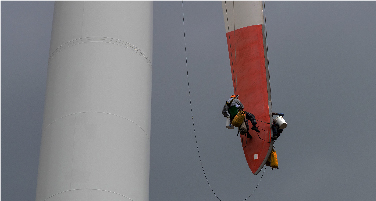
Wind Energy Sector
The protocol does already exist and basically consists of evacuating staff from the wind turbines and, in some cases, even from the substation. The step-by-step information provided by ATSTORM® allows key decisions to be made in order to take action, for example:
- Stopping work on blades.
- Evacuate the wind turbine.
- Stopping the wind turbine (thus reducing the probability of impact and, if it occurs, the damage caused).
- Evacuate the substation.
- Safeguard or isolate some sensitive components.
In the wind sector, interrupting any work on the field when there is no real risk of electrical storms involves costs that can be very high: firstly, the interruption of production, but also the costs of stopping cranes, staff, etc.
For example: if a wind turbine is stopped for maintenance work, and an electrical storm is formed or approaching, being able to resume work at the right time, thanks to a good storm detection system, could mean leaving that wind turbine repaired and in operation on the same day. In this case, if we consider a price of 40 € / MWh and a period of 15 hours (time lost compared to if the repair was completed the next day) we get 600 € of savings in a single night, in a single wind turbine.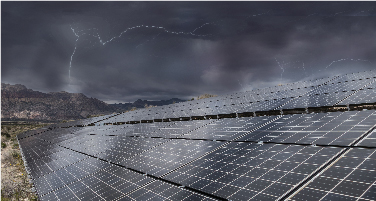
Photovoltaic sector
The photovoltaic sector is tending towards increasingly larger projects (it is common to see projects of more than 200 MW). This leads to larger extensions and more employees. The protocol exists and basically consists of evacuating workers and in some cases, even from the substation.
With the gradual information provided by ATSTORM® other decisions are made, in an objective manner, such as:
- Stopping maintenance or cleaning work on panels.
- Evacuate the park.
- Evacuate the substation.
- Safeguard or isolate some sensitive components by connecting independent generators.
- Place the trackers in a defensive position.
 Petrochemical Industry
Petrochemical Industry
Many companies in this sector do not have a clear protocol for dealing with the risk of electrical storms. A particular case is when plant shutdowns are carried out, either totally or partially, where hundreds of people arrive to congregate for weeks at a time. In this situation, and in the face of an electrical storm, the risk and possible operational inefficiency is considerably increased.
Actions that could be carried out, either during normal activity or in the case of a stop, are:
- Evacuate workers who are working outdoors.
- Evacuate workers who are carrying out work inside tanks (for example, cleaning them) or working at height.
- Stopping certain industrial processes (not continuous).
- Stopping certain electrical work, either outdoors or in indoor installations connected to overhead lines.
- Pre-alerting human teams to fire-fighting (which will be carried out in the event of lightning strikes, which would allow them to arrive a few precious minutes earlier).
- Stop activities related to the transfer of inflammable material during distribution and logistics tasks of petrochemical products.
- Activation of generators to safeguard sensitive components.
 Mining industry
Mining industry
The mining industry is one of the most susceptible to risks from electrical storms, as they often operate in open areas and involve the use of heavy machinery and the handling and storage of flammable materials, increasing the risk to employees. In addition, it usually houses a large number of workers, both during the construction phase of the mine and during its operation, and all of this in workplaces with flammable atmospheres.
When workers in a mine stop working due to an electrical storm, any excess downtime results in very high losses: for example, if 1,000 workers stop for 1.5 hours too long due to an incorrectly set alarm and without risk, the mine would lose 1,500 working hours unnecessarily. Having an efficient storm detection system allows the duration of the alarms to be adjusted to the actual storm conditions, without excesses that generate costly unproductive stops.
Some actions that can be carried out in this sector would be:
- Activation of generators to safeguard sensitive components.
- Stopping load preparation activities.
- Postponing the passage of people on conveyor bridges.
- Evacuation of risk areas.
 Tourism, recreation and sports sector with outdoor activities: resorts, sports, shows, etc.
Tourism, recreation and sports sector with outdoor activities: resorts, sports, shows, etc.
The need for early storm detection is evident in those outdoor activities that, in addition to preventing damage to infrastructure, must ensure the safety of workers and all those people, in some cases in large numbers, who participate: the public, athletes, etc.
A clear example of this need can be seen in sports events, such as golf. Two data from the American National Lightning Safety Council give us some clues: the first is that the annual average of deaths on golf courses worldwide is 13 people, most of them due to electrical discharges caused by storms. The second data is that, in the United States, 5% of all deaths caused by lightning strikes occur on golf courses.
- Some of the measures to be taken are:
- Suspend the competition if the risk of lightning strike is detected
- Evacuation of athletes, staff and assistants.
- Resumption of activity in a safe manner after the end of the alert.
 Advantages of the ATSORM® Storm Detection System
Advantages of the ATSORM® Storm Detection System
Local storm detection allows to prevent occupational and personal risks derived from lightning strikes. The application guide to determine the need for a detection system, as well as the existing types, are described in the UNE-EN IEC 62793 standard.
The ATSTORM® system, an expert local early warning system for the prevention of electrical storm risks from Aplicaciones Tecnológicas, is capable of detecting all phases of the storm in real time (“class A” detector according to the reference standard) and, therefore, is the ideal system for the prevention of occupational hazards due to lightning strikes.
Double sensor system
The monitoring of the electrostatic field allows to detect the formation of storms on the area to be protected with several minutes in advance, as well as their dissipation, allowing to optimize the downtimes.
A very high electrostatic field is a prerequisite for a lightning discharge. The best and safest way to know if a lightning strike can occur is to measure the ambient electrostatic field. This is the magnitude on which ATSTORM® reports the level of risk.
Additionally, electromagnetic field monitoring makes it possible to detect active thunderstorms approaching within a radius of 40 km.
Other features that make ATSTORM® storm detection system a highly innovative and effective product are:
- Totally electronic technology and no mobile mechanical parts: this avoids obstructions, wear, breakdowns and maintenance.
- Uninterrupted monitoring, guaranteeing the correct collection of information and permanent supervision by a highly qualified team.
- Expert system: continuous improvement of its algorithms, increasing its adaptation to the characteristics of its location and consequently the performance of the alarms.
- Flexible alert and management systems: multi-channel: APP, web portal, SCADA, sms, emails, etc. ATSTORM® has an App with push alerts in mobile devices for an instant control of the risk of lightning strikes in the field, allowing the user to visualize the risk status of their installations and take the necessary preventive actions through a private web portal.
It also has an automatic system by means of remote relay modules that make it possible to activate/deactivate the alarm systems, sirens, signals, etc. This gives total flexibility to the management of alarms in real time.
Self-contained power supply
The measurement stations have solar panels for total autonomy, as well as integrated batteries and additional AC supply that acts as a backup system ensuring continuous operation.
If you want to know more about the ATSTORM® storm detection system you can use the following link to contact us.
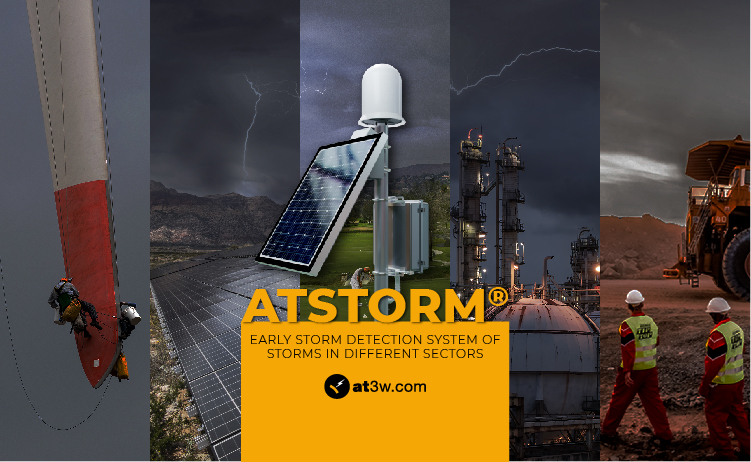
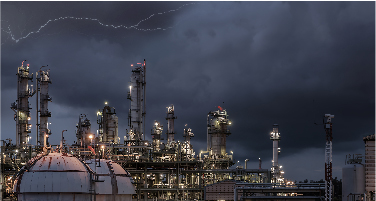 Petrochemical Industry
Petrochemical Industry Mining industry
Mining industry Tourism, recreation and sports sector with outdoor activities: resorts, sports, shows, etc.
Tourism, recreation and sports sector with outdoor activities: resorts, sports, shows, etc. 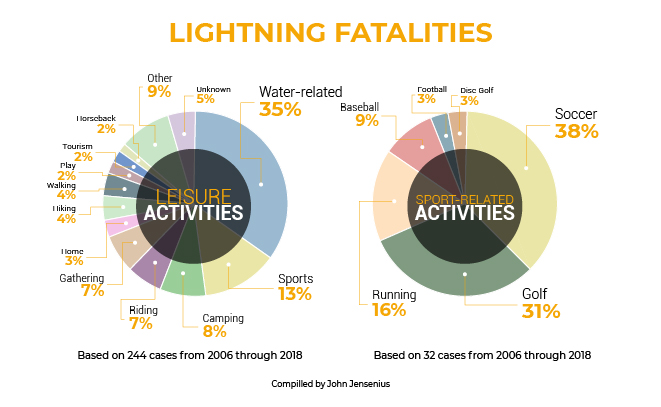 Advantages of the ATSORM® Storm Detection System
Advantages of the ATSORM® Storm Detection System